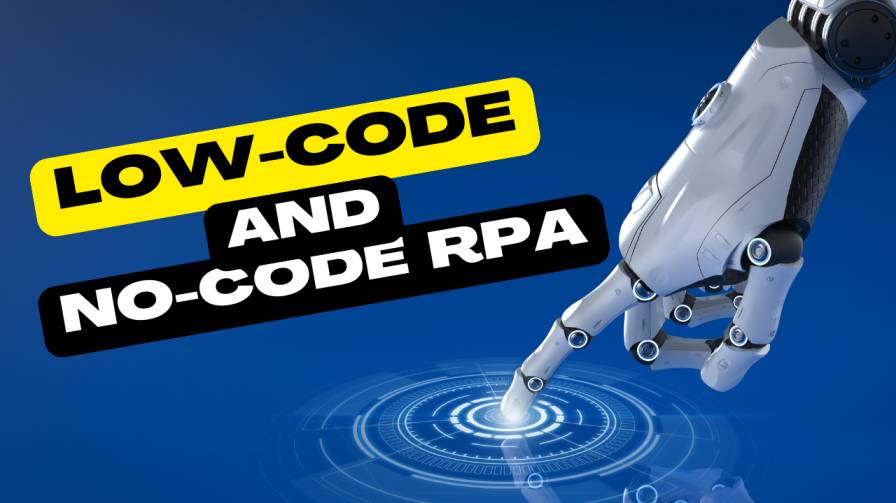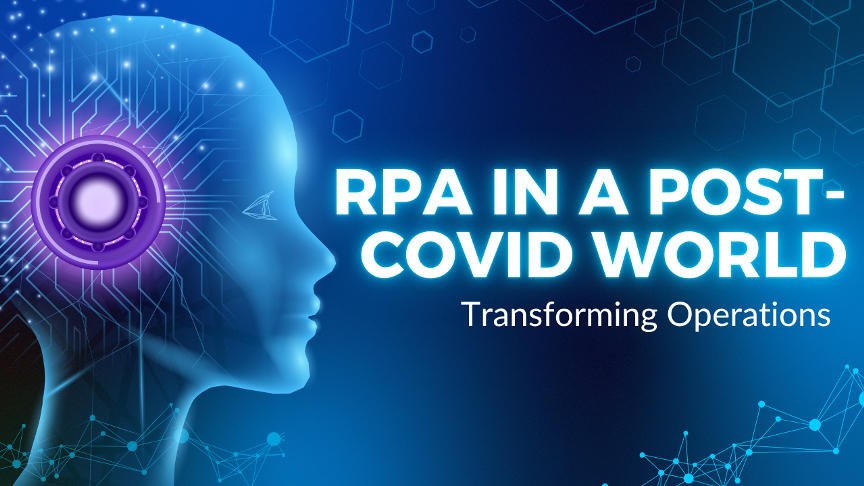Low-code and no-code RPA (Robotic Process Automation) change the automation setting by allowing companies to automate repetitive work without sophisticated coding capabilities. Users can create automation workflows using drag-and-drop elements rather than coding complex code on these sites with visual, intuitive interfaces. By 2025, Gartner projects that 70% of new company-developed applications will run on low-code or no-code technology.
Companies having high operating costs, inefficiency, and mistakes often use labor-intensive techniques. Using low-code solutions including UiPath platforms, businesses can create automation processes that raise accuracy, speed, and scalability. Businesses of every size are using low-code and RPA no-code solutions to simplify their operations and speed digital transformation.
What is the use of low-code RPA?
By offering an easy UI with little coding demands, low-code RPA systems work to make lives easier. These systems feature smart process automation modules, AI-driven applications, and pre-made templates to simplify the creation of automation workflows. Developers can change scripts, Integrate third-party applications, and set up automation logic to customize these workflows.
Using low-code RPA, a robotic process development company can develop automation solutions for sectors including healthcare, finance, and retail. These solutions automate tasks such as autonomous invoice processing, customer data management, and compliance monitoring. Forrester’s research shows that businesses using low-code automation cut development time by 38% relative to conventional coding techniques.
What is Making No-Code RPA Rise in Fame?
Non-technical users may automate corporate processes without writing a line of code, therefore no-code RPA is gaining ground. A no-code platform lets business analysts, HR executives, and customer service staff independently create and implement automation workflows. Traditional automation, by comparison, needs experienced developers.
Companies are starting to use RPA no-code solutions more because they are easy to use and cost-effective. According to a TechRepublic study, 75% of companies using no-code tools had reduced need for IT teams and faster roll-out times. Companies can become more flexible and productive by letting non-technicians engage in automation.
What advantages do low-code and no-code RPA provide?
Quicker Rollout and Development
One of the most significant benefits of low-code and no-code RPA is their development pace. Low-code platforms can cut down development time by up to 60%, whereas the old-fashioned software/ app development services cycle might run for months. This lets companies quickly introduce automated systems and see instant results.
Automation solutions that save money
For small and medium companies especially, you can hire dedicated RPA developers to help get better prices for RPA low-code no-code. Low-code and no-code tools offer a cost-effective solution by allowing internal teams to automate operations without needing extra programmers. According to McKinsey, businesses using low-code RPA solutions can grow output and save up to 30%.
Better Flexibility and Reach
No longer contained to IT staff, automation is enabled with RPA no-code solutions. Staff members in several different sections can use automation to start email management, report generation, and data entry. This democratization of automation guarantees that companies can react fast to alterations in operational needs and market conditions.
Customizability and scalability
No-code and low-code RPA tools are meant to scale. Small automation initiatives taken by companies can grow over several departments. Companies can also customize their automation processes using these tools. IDC says that businesses using low-code automation experience better scalability and operational effectiveness in 40% of cases.
What can businesses do with low-code and no-code RPA?
Streamlining Operations for Enterprises
Data extraction, invoice processing, and customer support responses are among the monotonous chores a robotic process development company uses in low-code and no-code. Companies can increase accuracy and output by cutting manual labor. According to Deloitte research, companies with RPA technologies see an 86% rise in process speed and a 59% drop in human errors.
Improved offers for app development services
Custom software developers can use low-code RPA for app development services to simplify software testing, rollout, and maintenance. This not only accelerates the direction of development but also improves the dependability of apps. Using no-code RPA automation technologies, automated test cases can be developed which guarantee improved software quality.
Maximizing Staff Performance
Businesses can hire dedicated RPA developers to craft unique automation solutions using low-code and no-code platforms. By automating mundane chores, workers can concentrate on more vital projects and hence increase general workforce productivity. According to research from Harvard Business Review, businesses using RPA see a 35% rise in employee efficiency.
What are the challenges of RPA using low-code and no-code?
Limited flexibility for difficult processes
Although low-code and no-code RPA systems are quite useful for usual automation jobs, they might not be appropriate for very complicated processes demanding sophisticated programming logic. Complex automation requirements could call for conventional coding to reach the desired level of customization even in the case of businesses running automatic systems.
Compliance and Security Risks
There is a danger of compliance problems and security defects if non-technical users create automated processes. Companies have to have strong governance rules to guarantee that automated workflows meet industry standards. 60% of the Companies using no-code RPA run security dangers due to poor management, a Cybersecurity Ventures study estimates.
Legacy Systems Integration Problems
Some corporations could find it challenging to mesh low-code and no-code RPA options with their current legacy technologies. Compatibility problems may surface and API settings and further customization will be needed. Companies ought to pick an RPA platform that provides smooth current infrastructure connectivity.
What benefits can low-code and no-code RPA offer small enterprises?
Slashing Expenses for Small Companies
Custom software development is a costly outlay given that small enterprises usually run on restricted IT resources and without budgets. Low-code and no-code RPA solutions present a less costly choice that enables companies to automate repetitive tasks such as invoice processing, customer inquiries, and data entry without needing to employ costly developers. This lets small companies use resources wisely, improve output, and center on core business operations without the need for expensive technology expenditure.
Customer Service Enhancement
Business success depends on great consumer service, which automation can greatly improve. By using no-code RPA, small businesses guarantee faster and more accurate customer communication by automating response management, chat support, and order tracking. Research reveals that companies employing automation in customer interaction improve response times and consumer satisfaction by 30%. Customers will be more loyal and the brand will be more well-known in cutthroat sectors.
How is artificial intelligence improving no-code RPA and low-code RPA?
Automation with AI-powered
By empowering intelligent decision-making, process optimization, and predictive analysis, artificial intelligence is improving the low-code and no-code RPA capabilities. With AI-powered software, data patterns can be analyzed, recommendations made, and automation efficiency boosted. By merging RPA with AI, companies can automate sophisticated tasks needing cognitive skills fraud detection, individualized customer contacts, and data-driven decision-making thereby smartening and improving business operations.
How can compliance management be enhanced with low-code and no-code RPA?
Automating regulatory operations
Especially in finance, healthcare, and insurance, companies rely on close conformity with sector guidelines. Low-code RPA and no-code RPA solutions let businesses automate compliance activities like audit reporting, data validation, and regulatory filing. This lowers the risk of human mistakes and guarantees current legal standards are met by companies. Research reveals that businesses that use automation for compliance lower manual labor by 40% and increase reporting accuracy.
Improving privacy and data security
Businesses require strong measures to safeguard sensitive data in light of rising apprehension about data security. By automatically managing access permissions, encrypting data, and tracking user behavior, no-code RPA helps enforce security policies. Using automation in their security procedures means organizations have 35% fewer data breaches and therefore create a more secure online environment.
How Could Low-Code and No-Code RPA Help IT Operations?
Automate Management of IT Services
Systems monitoring, software upgrades, and user access requests are just a few of the many repetitive duties IT departments usually manage. By automating these activities, UiPath low-code and no-code RPA reduce downtime and enhance general efficiency therefore simplifying IT operations. A Gartner study found that companies automating IT processes have a 50% increase in system uptime and much lower response times.
Simplifying IT workload and cutting expenses
IT staff scarcity and high operational expenses trouble many businesses. No-code RPA allows companies to decrease reliance on manual IT interventions and let experienced staff concentrate on challenging projects. Research shows that firms that use IT automation lower operating costs by 30% since they can distribute resources more wisely.
What part do low-code and no-code RPA have in supply chain management?
Improving control of stock
For companies to avoid stockouts and overstocking, they need to run their inventory cost-effectively. Automating inventory tracking, reorder processing, and demand forecasting with low-code and no-code RPA solutions helps businesses keep optimum stock levels. Companies that utilize automation in supply chain management find inventory accuracy improves by 25% and holding costs reduced by 20%.
Maximizing Coordination and Order Handling
For customers to be happy, orders should be delivered on time. Automating logistics tracking, shipment scheduling, and delivery status updates with no-code RPA cuts errors and delays in the supply chain. Research shows that companies using RPA in logistics see a 40% increase in delivery speed and fewer operational obstacles.
What are the Future visions of low-code and no-code RPA?
The future of automation will see more synergy between RPA and artificial intelligence, therefore processes will be smarter and more adaptive. Advances in natural language processing (NLP), artificial intelligence algorithms, and real-time analytics will help to maximize low-code and no-code RPA solutions, therefore companies should be prepared for transformation. Grand View Research results reveal the artificial intelligence-driven automation industry will be booming at a 40 percent CAGR by 2030. This will help businesses create self-learning robots that reduce human interaction and improve performance across multiple industries.
Conclusion
The future of automation will see more synergy between RPA and artificial intelligence, therefore processes will be smarter and more adaptive. Advances in natural language processing (NLP), artificial intelligence algorithms, and real-time analytics will help to maximize low-code and no-code RPA solutions, therefore companies should be prepared for transformation. Grand View Research results reveal the artificial intelligence-driven automation industry will be booming at a 40 percent CAGR by 2030. This will help businesses create self-learning robots that reduce human interaction and improve performance across multiple industries.
FAQ
1. How do businesses benefit from no-code or low-code RPA?
They speed up RPA automation processes because the need for experienced professionals is not necessary.
2. Is low-code/ no-code safe?
It is safe if used by following the regulations. Such RPA tools must be governed and checked routinely.
3. Can low-code no-code RPA integrate with existing tools?
Yes, these RPA tools can easily integrate with existing tools.
4. Which industries use low-code no-code RPA?
Low-code no-code RPA is used by many industries including Health, finance, banking, real-estate, supply chain management and IT.




